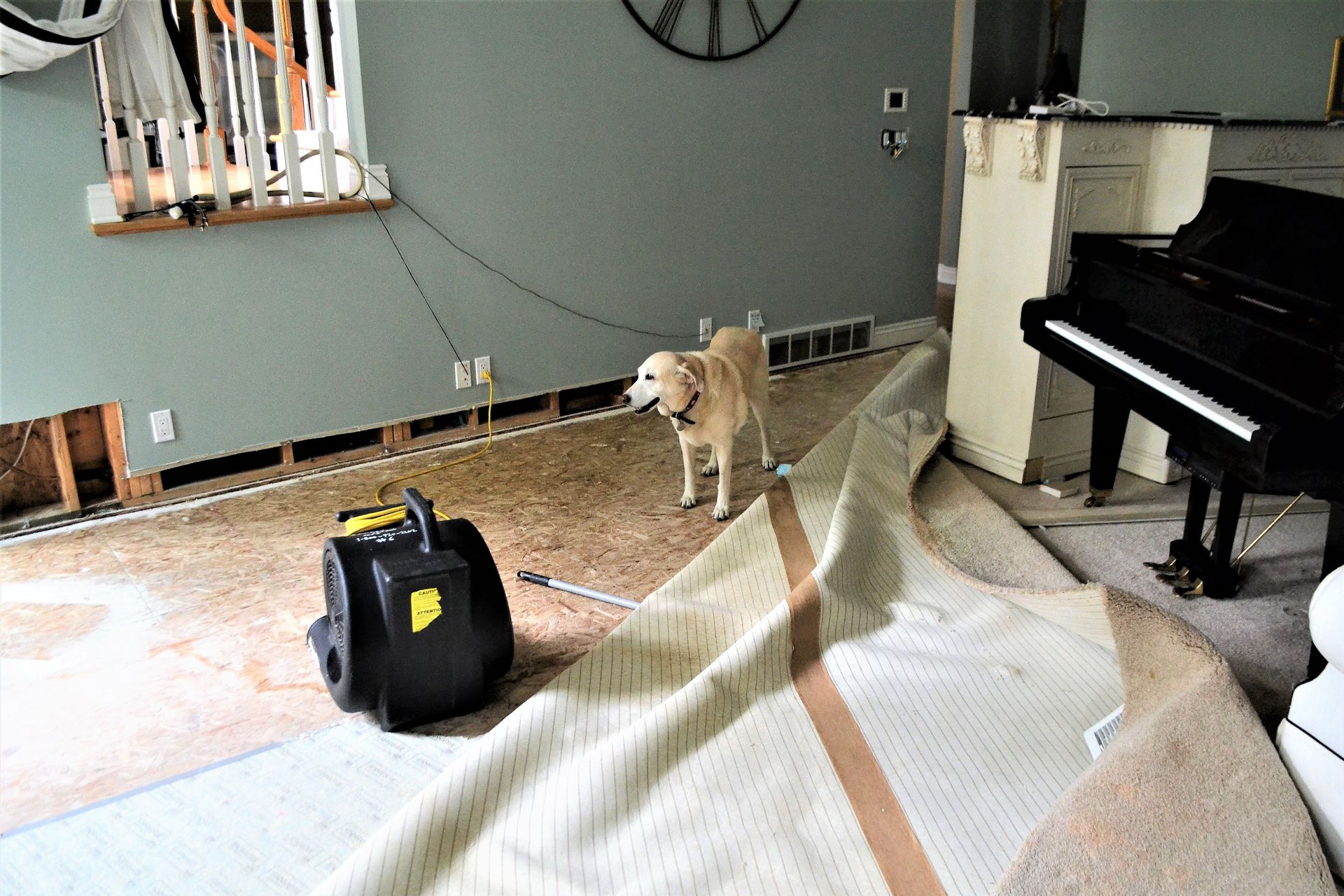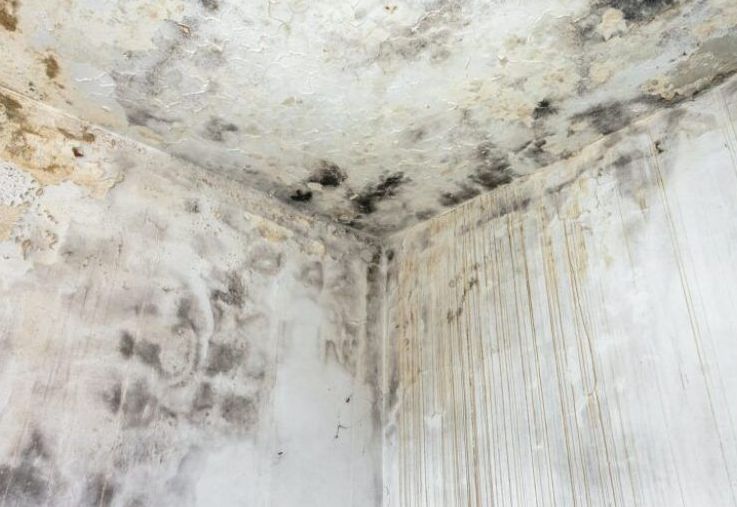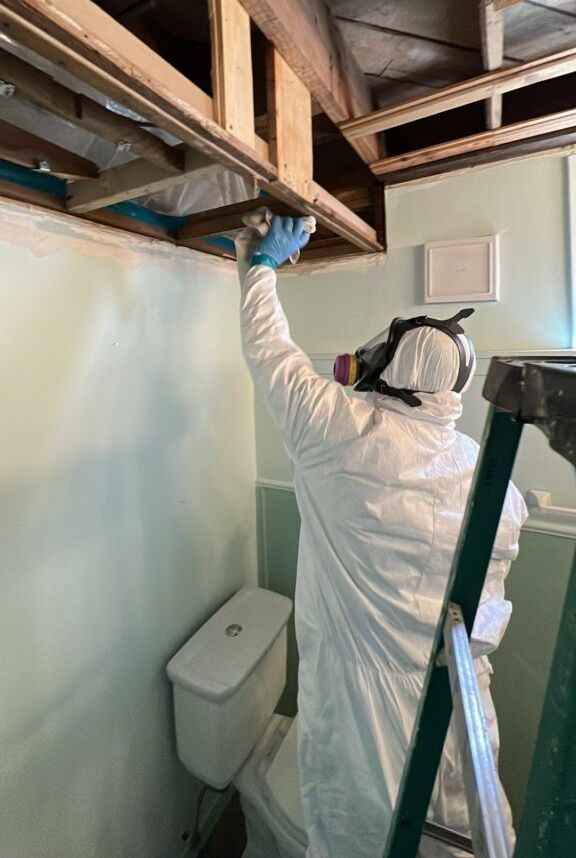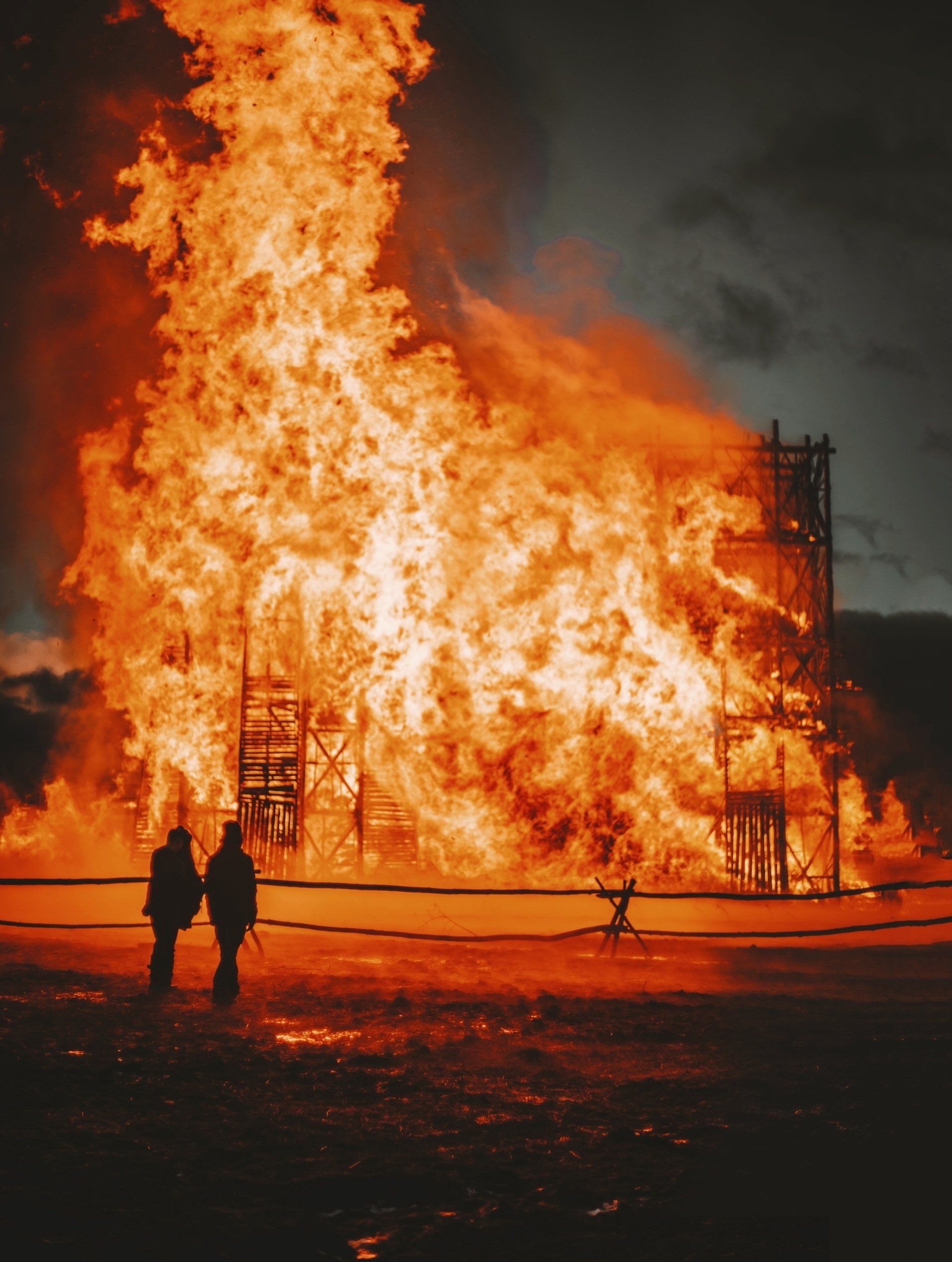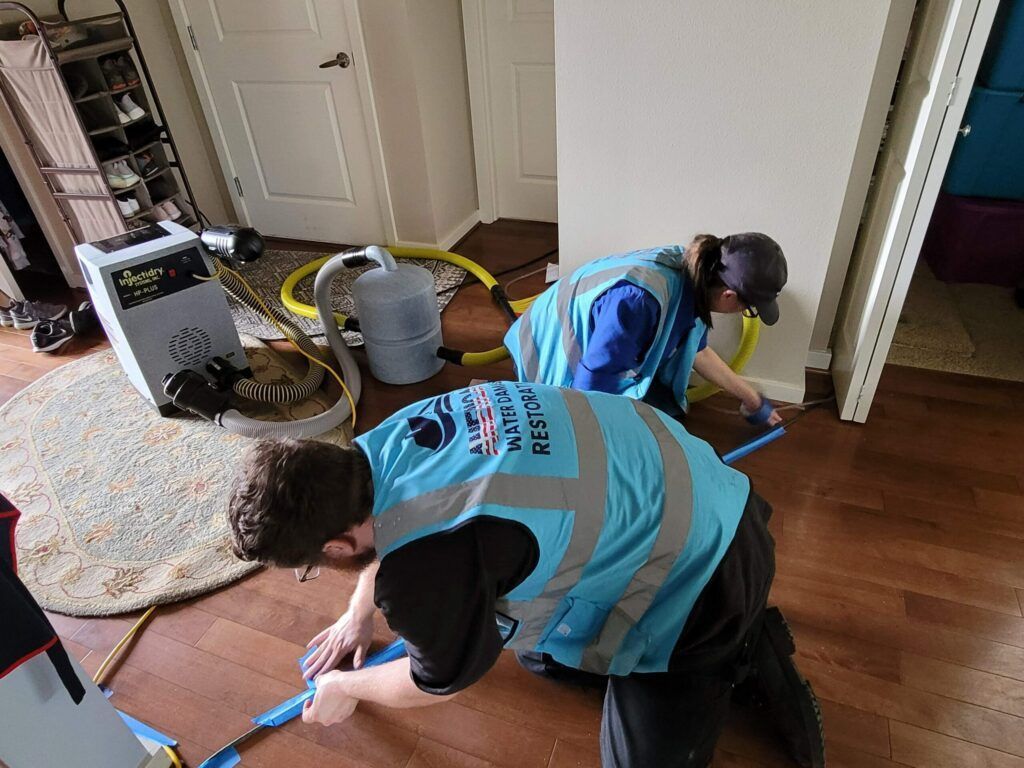- 24/7 EMERGENCY SERVICE
- ON OUR WAY IN 60 MINUTES OR LESS
- WE WORK WITH YOUR INSURANCE
Understanding the Water Damage Restoration Process
The Ins and Outs of the Water Damage Restoration Process: A Comprehensive Guide
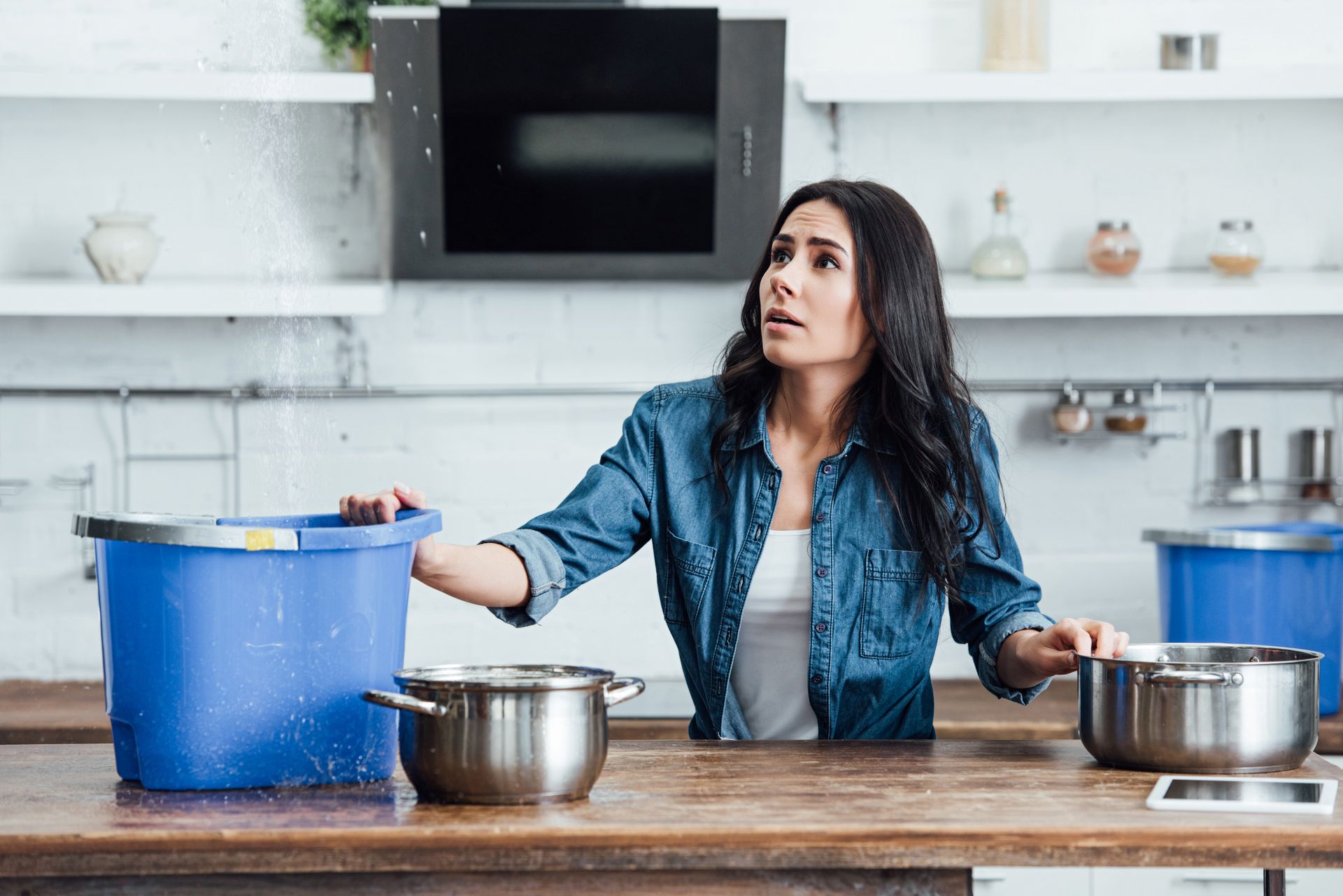
Water damage, the detrimental impact of water intrusion into materials or systems, can rapidly escalate into a major problem for homeowners if not addressed promptly. The urgency to initiate the water damage restoration process stems from potential structural harm and health risks due to mold growth. Commonly stemming from floods, leaks, and burst pipes, water damage can compromise the integrity of a home. This guide will navigate through the multi-faceted water damage restoration process, detailing assessment, water removal, drying, cleaning, and repairs. Readers will gain insights into each step, the importance of swift action, and how to restore their homes effectively after water-related mishaps.
Assessment and Inspection
The initial assessment and inspection are critical first steps in the water damage restoration process. This stage is essential in identifying the extent of the damage and its root causes, which is indispensable in crafting an effective restoration plan. Professionals use this opportunity to pinpoint potential sources of water, such as a broken pipe or a compromised roof, which are often not visible to the untrained eye. Knowing where the water comes from is crucial in preventing further damage and helps to mitigate the issue at its source.
During the assessment, restoration experts deploy advanced tools to ascertain the severity of the water damage. Moisture meters are utilized to measure the moisture content in various materials, allowing professionals to assess how deeply water has permeated surfaces like walls or flooring. Thermal imaging cameras provide a non-invasive means of detecting moisture and locating water through temperature differences shown in the camera's display. These tools help to visualize the extent of the water damage without causing additional disturbance to the property.
Commonly, the types of damage uncovered during the assessment can range from superficial water stains to more severe issues such as swollen drywall, warped floors, or even structural compromise. Mold growth is another significant concern identified during this phase. It poses health risks and can begin to develop within 24 to 48 hours of water exposure, emphasizing the necessity for a swift response.
The comprehensive examination furnished by the assessment phase is instrumental in determining the best course of action. By understanding the full scope of the damage, professionals can prioritize tasks, estimate the time needed for restoration, and decide whether to focus on removal, repair, or replacement of affected materials. Gathering this information is vital to ensure that restoration efforts are both effective and efficient, ultimately restoring safety and normalcy to the homeowner's property.
Water Extraction
Once the extent of water damage has been thoroughly assessed, the immediate next step is water extraction – a critical phase of the restoration process due to the importance of removing water swiftly to mitigate further damage and impede mold growth. This stage of water removal is typically achieved through the use of powerful pumps and specialized vacuums designed to handle large volumes of water, thereby effectively minimizing the moisture content in the affected area.
Professionals are equipped with submersible pumps for high-level water scenarios, where water stands in significant depth, as might be seen in a basement flood. These pumps are capable of removing water at a rapid pace, which is crucial since the longer water sits, the more damage it can cause. Industrial-strength wet vacuums or extractors are used on carpets and flooring to pull moisture from the fibers and subfloor, drastically accelerating the drying process.
Removing water quickly is not just about preventing structural damage but also about avoiding the health hazards of mold and mildew, which can flourish in damp environments. A prompt response is essential as mold can begin to grow within 24–48 hours following water exposure. To curtail these risks, restoration teams work diligently to clear out all standing water and moisture as effectively as possible.
For homeowners, while the heavy lifting is best left to professionals, there are measures to take to facilitate the water extraction process: ensure the electricity is turned off to avoid electrocution risks, especially around standing water; if safe to do so, remove smaller valuables and belongings from the area to prevent additional water damage; and avoid contact with the water, which may be contaminated with hazardous substances.
To be most effective in these efforts, clear communication and coordination with restoration professionals are recommended. Homeowners can assist by identifying sources of water and relaying the prior history of any water issues in the home. By working together with professionals, homeowners can help expedite the extraction process, contributing to a more efficient restoration and a quicker return to normalcy in their homes.
Drying
Following the extraction phase, the drying-out process commences, which is critically important in halting the deterioration of building materials and thwarting mold growth. This step tackles the residual moisture that lingers even after water removal, moisture that can pervade walls, floors, and furniture. If not addressed, this lingering dampness can weaken structural integrity, causing materials to rot, swell, or warp, and it provides a prime breeding ground for mold and mildew, which can lead to significant health issues and reduce indoor air quality.
Professionals utilize industrial-grade air movers, which are different from traditional fans as they are designed to promote rapid air circulation and evaporate moisture effectively. These devices are strategically placed throughout the affected area to ensure comprehensive airflow across wet surfaces. Dehumidifiers also play a vital role in the drying process by extracting water vapor from the air and maintaining a controlled environment within the space, which is crucial to prevent secondary water damage caused by high humidity levels.
In addition to this high-powered equipment, homeowners can contribute to the drying process. Common practices include opening windows to facilitate cross-ventilation, which can be particularly effective in reducing moisture if the outside air is dry. Fans can also be used to promote air circulation, but it is important to note that care should be taken as fans alone may not suffice in areas with deep saturation or in dealing with significant water damage. It is advisable to consult with restoration professionals before employing these methods to ensure they complement the industrial equipment being used and do not inadvertently spread moisture to unaffected areas.
Through these combined efforts, ensuring thorough drying is crucial to the integrity and safety of the home post-water damage. Maintaining a dry, mold-free environment not only supports the structural components of a building but also safeguards the health of its inhabitants.
Cleaning and Sanitizing
Post-water damage, cleaning, and sanitizing serve as crucial steps in the restoration process, necessary to ensure the affected area is not only visually clean but also hygienically safe. These steps are imperative to prevent the growth of mold, bacteria, and other harmful microorganisms that thrive in moist conditions. To achieve this, professionals employ a variety of cleaning agents designed for specific materials and contamination levels. These may include antimicrobial treatments that inhibit the growth of mold and mildew on surfaces, as well as disinfectants that kill bacteria and viruses potentially carried by the water.
The techniques used in this phase range from air scrubbing, which removes airborne particles and spores, to steam cleaning, which penetrates porous materials. The selection of the cleaning method is based on the type and extent of contamination. Contaminated materials like drywall or insulation are often removed to prevent the spread of mold spores. Hard, non-porous surfaces, on the other hand, are typically cleaned with powerful agents and may be sealed to lock out moisture and contaminants.
In the interest of health and safety, professionals are meticulous in preventing cross-contamination. This involves establishing containment zones using plastic sheeting and negative air pressure to isolate the affected areas. Protective gear, such as gloves and respirators, is utilized to protect workers and prevent the spread of contaminants.
Additionally, safety protocols are enforced to protect the occupants of the home. This includes the use of HEPA vacuuming before and after the cleanup to capture fine particulates and ensure the continuous monitoring of indoor air quality during the restoration process. The final verification of cleanliness and the absence of harmful microorganisms is typically performed through environmental testing, which provides peace of mind to the homeowners that their space is safe for habitation. Professional restoration teams take these rigorous steps to secure the health and safety of all occupants, guaranteeing that once the process is complete, the environment is not only clean but also conducive to good health.
Restoration and Repairs
The final phase of water damage restoration involves the actual repair and restoration of the affected area. This stage is where the affected property is returned to its pre-damage condition and may involve significant reconstruction, such as replacing damaged wallboards, installing new carpeting, or refinishing hardwood floors. Professionals assess the extent of damage to determine which materials can be salvaged and which need replacement. For example, swollen subfloors may require removal, damaged drywall and insulation might need to be cut out and replaced, and compromised structural elements must be reinforced or reconstructed.
During this restoration process, professionals often work hand-in-hand with homeowners to select appropriate replacement materials and finishes that match existing ones or upgrade where desired. They bring valuable insight into material quality, durability, and aesthetic coherence, ensuring that the home not only regains its functionality but also its comfort and appeal. This selection process can encompass decisions regarding paint colors, flooring choices, or types of mold-resistant materials to prevent future damage.
Bringing experienced professionals on board is critical to ensure the safety and correctness of these repairs. Experts not only have the technical skills necessary for proper installation and finishing work but also understand building codes and regulations, guaranteeing a lawful and safe restoration.
Finding a trustworthy and dependable restoration company is crucial. Look for licensed and insured contractors with certifications from recognized industry organizations, like the Institute of Inspection, Cleaning, and Restoration Certification (IICRC). It is also wise to review testimonials and ask for references to ascertain the company's reliability and quality of work. Check their response times and ask about their warranty policies. A reputable company should conduct thorough inspections, provide transparent quotes, and maintain open communication throughout the restoration process.
In summary, close collaboration between professionals and homeowners is essential to select materials and carry out repairs that restore safety, functionality, and aesthetic value to the home. Thoroughly vetting a company's credentials, responsiveness, and track record contributes to a seamless restoration experience and lasting results.
Communication and Documentation
Effective communication and meticulous documentation are pillars of a successful water damage restoration process. Transparent communication enables homeowners to stay informed and involved, providing them with the assurance that their property is being managed professionally. Restoration experts typically keep in touch with homeowners through regular updates, explaining the progress of the work, any challenges encountered, and changes to the projected timeline or budget. This ongoing dialogue is central not only to managing expectations but also to empowering homeowners to make informed decisions about their property.
Documentation plays a critical role throughout the restoration process. Professionals diligently record all stages of the work, whether it pertains to the initial damage assessment, the cleaning and sanitizing phase, or the final restoration. Detailed records, including time-stamped photographs and written reports, create a transparent account of the damage and the subsequent repairs. These documents become a valuable resource if homeowners need to liaise with insurance companies or other parties involved in recovery efforts.
Moreover, documentation provides a verifiable timeline of events and actions, essential for ensuring accountability and quality control. For instance, pre-restoration photographs paired with post-restoration images offer a clear before-and-after comparison, validating the work completed. Also, professionals might present homeowners with moisture level readings, dehumidifier settings, and other such data that illustrate the drying and sanitation process in a factual, quantitative manner.
Throughout the restoration process, itemized reports allow homeowners to see a breakdown of services rendered, materials used, and the associated costs. These records serve to clarify the scope of work and protect against misunderstandings or disputes. Additionally, when professionals use project management software to log every detail, stakeholders can access real-time information, broadening communication channels between the restoration team, insurance adjusters, and homeowners.
In essence, wedded to the restoration journey is a commitment to transparent and effective communication, supported by rigorous documentation, to ensure the homeowner's peace of mind and an authentic account of the recovery process.
Water Damage Restoration With Northeastern Restoration
At Northeastern Restoration, we understand the chaos water damage can inflict on your home. Our certified professionals are equipped with state-of-the-art technology and extensive expertise to restore your property efficiently and effectively. From initial assessment to the final touches of repair, we manage every step with precision and care. Trust us to bring your space back to its pre-damage condition. Don't let water damage set you adrift. Call us now to schedule an inspection, and let us steer you toward a swift and seamless restoration.
CONTACT US 24/7 FOR ANY TYPE OF RESTORATION SERVICES
Our Contact Information
123 2nd Ave S, Edmonds, WA 98020, United States of America
OPEN 24/7
CONTACT US 24/7
For an immediate response call us 24/7 at (206) 771-7040 or complete the form below.
Contact Us
We will get back to you as soon as possible.
Please try again later.
24/7 Emergency Services!
CALL (206) 771-7040
We’re Fast! We’re Efficient!… And we will get the job done right, the first time!
Contractor Number: AMERIWD794PJ
OUR SERVICES
CONTACT INFO
123 2nd Ave S, Edmonds, WA 98020, United States of America
All Rights Reserved | American Water and Damage Restoration LLC

